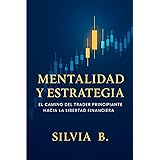The cryptocurrency market, long governed by predictable rhythms, now faces an unprecedented inflection point. Historically, Bitcoin’s post-halving surges have culminated in a market peak almost precisely 18 months later. For instance, the 2016 halving in July led to a cycle top in December 2017, aligning perfectly with this timeframe. Similarly, the 2020 halving in May foreshadowed the November 2021 peak, once again falling within the 18-month window. However, with the April 2024 halving, the 18-month mark brings us to November 2025, a period where traditional patterns appear to be diverging dramatically. The familiar four-year **crypto cycle** that guided investors for a decade is now under intense scrutiny, potentially signifying its demise.
As highlighted in the video above, this pivotal moment isn’t merely a delay; it represents a fundamental re-evaluation of market dynamics. This shift has profound implications, questioning the validity of historical models and cycle top predictions that many have relied upon. If Bitcoin continues its current consolidation above critical psychological levels rather than experiencing a sharp decline, it suggests a complete overhaul of the market structure. This crucial period, centered around November 2025, marks a fork in the road, forcing investors to confront a future without a clear map based on past performance.
The Fading Echo of the Four-Year Bitcoin Cycle
For nearly ten years, the cryptocurrency world moved to the cadence of the four-year **Bitcoin cycle**, a pattern so consistent it earned an almost sacred status among investors. This cycle typically involved a halving event, followed by an accumulation phase, a parabolic rally, an 18-month post-halving peak, and finally, a soul-crushing bear market. This predictable rhythm profoundly influenced investment strategies, project development, and market sentiment across the entire industry. However, the current price action tells a different story, one that challenges the very foundation of this long-held belief.
The latest data points away from the expected cycle behavior. The October 6th, 2025, high of 126K, if considered a cycle peak, would make this the longest cycle in history, extending beyond the typical timeframe by several weeks. More significantly, Bitcoin’s response to this potential peak is vastly different from previous cycles. Following the 2017 top, Bitcoin plunged by nearly 40% within a week; after the 2021 top, a similar 40% drop occurred within three weeks. In stark contrast, almost six weeks after the October 6th high in 2025, Bitcoin has only receded by approximately 17%, maintaining a robust consolidation above the crucial 100K psychological level. This resilience suggests a market no longer adhering to its historical script, prompting a fundamental re-evaluation of our understanding of the **crypto cycle**.
Institutional Influence: A New Paradigm for Crypto Market Patterns
One of the most significant factors reshaping the **Bitcoin cycle** is the influx of institutional capital, largely facilitated by the launch of Bitcoin spot ETFs in January 2024. These financial instruments have fundamentally altered market dynamics, shifting control from predominantly retail-driven sentiment to institutionally-driven strategies. Previously, cycles were characterized by intense emotional trading, volatile swings, and pronounced boom-and-bust phases, fueled by individual investors. Now, large institutions operate on different timeframes and with sophisticated strategies, potentially leading to more controlled and less impulsive market movements.
This institutionalization could explain the emerging pattern observed since 2023, where Bitcoin tends to bottom on the 50-week Exponential Moving Average (EMA), rally for about six months, and then retrace back to test the EMA as support. This pattern has repeated three times, suggesting a more deliberate and cyclical accumulation/distribution strategy from institutional players. Unlike retail investors who might be swayed by short-term news or social media hype, institutions often execute trades based on long-term models and risk management protocols. This new dynamic challenges the old cycle, proposing a world where the 50-week EMA becomes a more relevant indicator than the traditional halving schedule for predicting market behavior within the broader **crypto cycle**.
The 50-Week EMA: A Potential New Indicator for the Bitcoin Cycle
The 50-week Exponential Moving Average (EMA) has long been a watched metric in traditional finance, and its relevance in crypto, particularly in a post-ETF world, appears to be growing. While some traditional analysts assert that a break and hold below the 50-week EMA signal the end of a bull run – a pattern largely true since the 2013 cycle – the current market’s defiance of old rules requires a fresh perspective. Indeed, the emerging pattern suggests that instead of being a death knell, the 50-week EMA might now function as a significant support level, a launchpad for new rallies.
Since 2023, the market has demonstrated a recurring sequence: Bitcoin’s price finds its bottom precisely on the 50-week EMA, then embarks on a robust rally for approximately six months, only to return and retest the EMA as support. This repeated behavior, seen three times already, presents a compelling case for a new, institutionally-influenced cycle. This pattern aligns with the idea that large players might be employing a more systematic approach, using key technical levels for entry and exit points rather than succumbing to the emotional swings that characterized previous, retail-dominated **crypto cycles**. Understanding this shift is crucial for adapting investment strategies in this evolving landscape.
Uncharted Territory: Implications of a Broken Cycle and an Erased Ceiling
If the venerable four-year **crypto cycle** is truly broken, the implications are far-reaching and profound. All historical models, which derived their predictive power from this cycle, could become obsolete. Cycle top predictions based on past data, once considered reliable, would be rendered incorrect. Furthermore, the concept of “diminishing returns,” which suggested Bitcoin’s growth potential capped at certain levels in each successive cycle, would also be challenged. This thesis was intrinsically linked to the four-year framework; if the framework collapses, so do its inherent limits.
This situation means the market is not just in “uncharted territory” but effectively in “no territory” – without a pre-existing map to guide future movements. The old ceiling for Bitcoin’s price, once defined by the diminishing returns theory within the four-year cycle, would disappear, opening up possibilities for unprecedented price discovery. This scenario demands investors recalibrate their expectations and analytical frameworks, moving beyond reliance on historical patterns to embrace a more adaptive and nuanced understanding of market forces. It compels a deeper look into real-time price action, institutional flows, and emerging technical indicators rather than resting on the laurels of past cycles.
Navigating the Fork in the Road: Bear Case vs. Bull Case for the Crypto Cycle
As November 2025 unfolds, the market presents two distinct and plausible scenarios, each with significant ramifications for the future of the **crypto cycle**. Scenario A, the Bear Case, posits that the traditional cycle holds true, albeit with a slight delay. In this outlook, Bitcoin fails to rebound convincingly from the 50-week EMA by year-end, leading to a prolonged and painful “crypto winter” stretching into 2026. This would validate those who believe the cycle is immutable, leading to a multi-year stagnation where asset prices bleed slowly, testing the resilience of even the most seasoned investors. The 18-month top pattern, though delayed, would ultimately prove its enduring validity, reinforcing the established order.
Conversely, Scenario B, the Bull Case, proposes a fundamental break from the old cycle. Here, Bitcoin successfully bounces from the 50-week EMA, initiating a strong rally that squeezes short positions and pushes prices to new all-time highs in the first half of 2026. This outcome would officially declare the four-year cycle dead, ushering in a new set of market rules and an entirely new price ceiling for Bitcoin. Such a consolidation would serve as a launchpad, not for an expected bear market, but for an accelerated ascent. This scenario, while exciting, also introduces a terrifying element of the unknown, as historical precedents would no longer offer a reliable guide to future market behavior, fundamentally reshaping the very nature of the **crypto cycle**.
The “Crap Dodging Principle”: A Strategic Framework for Uncertainty
In a market devoid of clear maps and facing such a critical inflection point, adopting a robust decision-making framework becomes paramount. One such framework, dubbed the “Crap Dodging Principle,” offers a practical three-step approach to navigate complex scenarios. The first step involves clearly outlining the potential scenarios. For the current market, this means acknowledging Scenario A (the bear case where the four-year **crypto cycle** holds, and the top is in) and Scenario B (the bull case where the cycle is broken, and new highs are imminent), while implicitly setting aside neutral sideways movements for simplicity.
Step two requires identifying your specific options within each scenario. For instance, in a bear case, an investor might consider selling everything to preserve capital, or conversely, HODLing Bitcoin and established large-cap altcoins, betting on eventual recovery. Each option carries distinct benefits and risks. For the bull case, options could include HODLing to ride the new wave or strategically buying more Bitcoin, Ethereum, and potentially alts, accepting the amplified risk for potentially higher rewards. The final step of the Crap Dodging Principle is to choose the path that, after careful consideration of all options and their associated risks, leads to the least “crappy” outcomes overall. This method encourages proactive risk assessment and strategic planning, ensuring decisions are aligned with individual risk tolerance and financial goals, regardless of which way the **crypto cycle** evolves.







